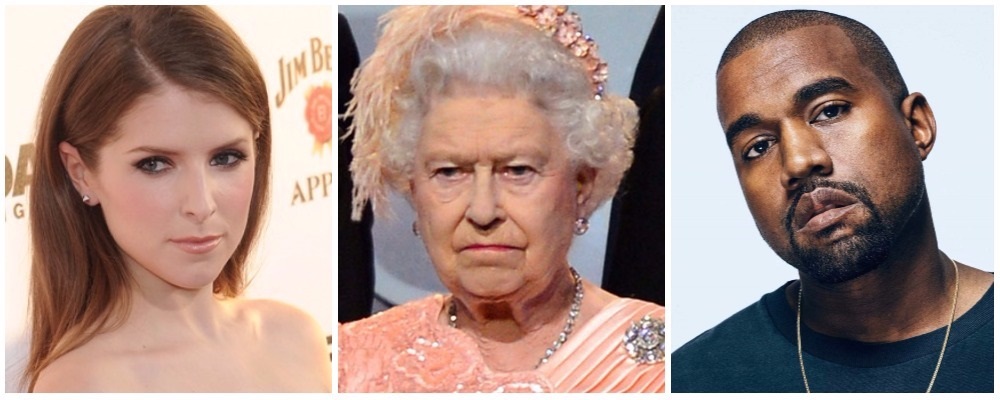- Angry resting face is caused by a combination of facial features and social perceptions.
- Surgical and non-surgical techniques can help correct anatomical features that contribute to angry resting face.
- Botox is one of the simplest methods of treating angry resting face, but results are not permanent.
- Correcting angry resting face comes down to determining exactly which facial features can be altered and brightened up.
Remember that super-viral Bitchy Resting Face Public Service Announcement? It was all in good fun, parodying serious PSAs to warn the public about women who suffer from a perpetual scowl, but the condition is actually a serious problem for a lot of people.
If you look disgruntled when you’re actually smiling on the inside, we get your frustration. Facial biases — the superficial cues that help us understand one another — aren’t always true indicators of what we’re actually feeling.
Understanding exactly what causes BRF, anatomically speaking, is key to helping brighten up a person’s facial expression. We spoke with plastic surgeons from around the country, asking them to weigh in on exactly how to address this condition.
What Causes Angry Resting Face?
Determining what causes angry resting face comes down to studying a combination of human behavior and physiological activities. Not only does the condition result from social constructs and perceptual bias, but it’s also worsened by certain muscles and controls in the face that cause us to convey certain emotions, either consciously or subconsciously.
Two researchers from Noldus Information Technology conducted a study into the social aspects of the matter. Using high-tech face-reader software, behavioral researchers Jason Rogers and Abbe Macbeth discovered that even the most minute facial cues can contribute to the appearance of a person being angry or upset. In other words, our faces convey emotions is very subtle ways — and those cues are often beyond our control.
There are plenty of iconic examples of A-list celebs who suffer from BRF, including Queen Elizabeth and actress Anna Kendrick, but male celebs aren’t immune to it either. Kanye West is often cited as the best male example of BRF. Nevertheless, it remains a predominantly feminine concern, as gender stereotypes dictate that women smile more and have more positive body language.

The Anatomy of BRF
This explains our interpretation of anger, but what about the anatomy behind it? According to plastic surgeons, facial expressions, like squinting eyes or a slightly upturned lip, can cause a person to appear upset. Expressionless faces are also to blame for a perceived image of contempt or anger.
“Angry resting face syndrome is caused by overactive depressor anguli oris, a small muscle that pulls down the corners of the mouth,” according to Dallas-based plastic surgeon Dr. Bradley Hubbard. “When this muscle is blocked by a neurotoxin (Botox, Dysport, Xeomin) it becomes weaker than the muscles that elevate the corners of the mouth and you are forced into a smile.”
There are several factors that are to blame for the facial folds and characteristics that we consider “angry.” These include frowning, grimacing, downturns at the corner of the mouth, and heavy brows. Other aspects, like sunken cheeks, squinty eyes, deep forehead wrinkles and a hanging jowl line, can also contribute to BRF.
As mentioned by Dr. Hubbard, injections are one of the simplest ways to soften the face. However, Botox and fillers aren’t a fix-all for every single scenario, explains New York plastic surgeon Dr. Leonard Grossman.
“As a plastic surgeon, one would have to carefully evaluate the patient to find the cause of the angry face — as in anatomical build, muscle hypertrophy or over-activity,” says Dr. Grossman. For these reasons, many people combine Botox or another injectable with surgical procedures to permanently correct facial characteristics that are more difficult to treat.
As Denver-based plastic surgeon Dr. John A. Grossman of Grossman Plastic Surgery explains, “A brow lift can lighten the furrowed look around the eyes, while a lower facelift can reverse the characteristic scowling shape of the mouth. Several injectables can also be used to ‘lighten up’ the face. These include Botox, which can be targeted precisely in problem areas like the space between the eyebrows, and fillers like Juvederm or Restylane, which reverse lines and wrinkles in the space around the mouth.”
Botox: The Easiest Method
How do celebrities treat their eternal grimace? The same way they treat tons of other facial issues: with Botox, of course. Kelly Ripa admitted on Live! With Kelly and Michael that she uses the super-popular injectable to ward off BRF, explaining that before she had Botox, people constantly asked her if something was wrong.
The takeaway? Botox is definitely the simplest way to achieve a more neutral face, but as always, there are some downsides.
“The easiest solution to resting angry face is Botox or Dysport,” notes Toronto-based plastic surgeon Dr. Matthew Plant. “For people whose angry look comes from having a permanent frowning mouth, a few (two or three) units to the depressor muscles in the chin causes a slight upturn in the corners of the mouth, making the patient appear to be friendlier.”
“For those whose angry look comes from the brow area, the issue can be corrected with injection of one of these products into the glabella to slightly raise the medial portion of the brow, creating a less angry brow shape, as well as into the lateral part of the brow or around the eye to give a slight brow lift, opening the eyes a bit more and making the person seem friendlier,” he adds.
In other words, a board-certified plastic surgeon or specialist will help you develop a tailored course of action to address exactly which areas of your face could be softened or brightened up using Botox or Dysport. “Some people need a combination of these procedures to truly take the angry look off their face,” said Dr. Plant.
The primary downfall with using Botox and other facial fillers to soften the facial features is that it’s not permanent. Depending on the area of the face and the type of filler used, results can last anywhere from three to six months. Those who want a different approach, and one that’s more permanent, may want to consider surgery.
Surgical Procedures For Angry Resting Face
- Facelift — According to Beverly Hills plastic Surgeon Dr. J. Timothy Katzen, sunken cheeks, a hanging jowl and other conditions that make a person appear to be permanently angry can be treated temporarily with fillers, but the permanent solution to these problems would be a facelift. Non-surgical facelifts can be used to tighten the skin and correct droopiness, which can help a person appear less angry.
- Grin Lift — A procedure called a grin lift, which is similar to a facelift but primarily focuses on the mouth area, is quickly becoming one of the most popular surgical options for treating BRF. A surgeon will make an incision on the upper line of the lip and remove a bit of tissue, which effectively turns a frowning mouth upside-down. Unfortunately, permanent scarring around the mouth makes the procedure a bit risky.
- Brow Lift — A strong or furled brow can subconsciously indicate anger. In certain cases Dr. Katzen recommends a brow lift for BRF sufferers who have a hanging or ptotic brow. This condition causes the eyebrows to appear to sink downward, causing an angered expression. The furled brow is particularly common in aging patients, but it can affect people at any age.
- Blepharoplasty — Sometimes called an upper eyelid lift, blepharoplasty is a procedure which tightens or removes the extra skin around the eyes that can cause a person to appear mad, disengaged or expressionless. It’s often recommend for aging patients whose eyes have begun to sag, compromising their vision. Plastic surgeons recommend this procedure for those who suffer BRF due to heavy upper eyelids that occur with aging.
- Forehead Lift — “One of the most common characteristics of someone with angry face is deep forehead wrinkles located in-between the eyes, usually at the top of the nose’s bridge,” explains Dr. Katzen. He recommends treating this condition with a forehead lift — a surgical procedure where a doctor makes small incisions at the hairline in order to tighten the forehead and raise the brows — plus Botox for regular maintenance.
- Neck Lift — If you thought your eyes, mouth and brows were the only thing contributing to your angered expression, you may be missing a major factor. Dr. Katzen says that a hanging or sagging neck can also contribute to a loose, angry or expressionless look. This can be fixed with a neck lift, liposuction at the neck, or Kybella injections.









